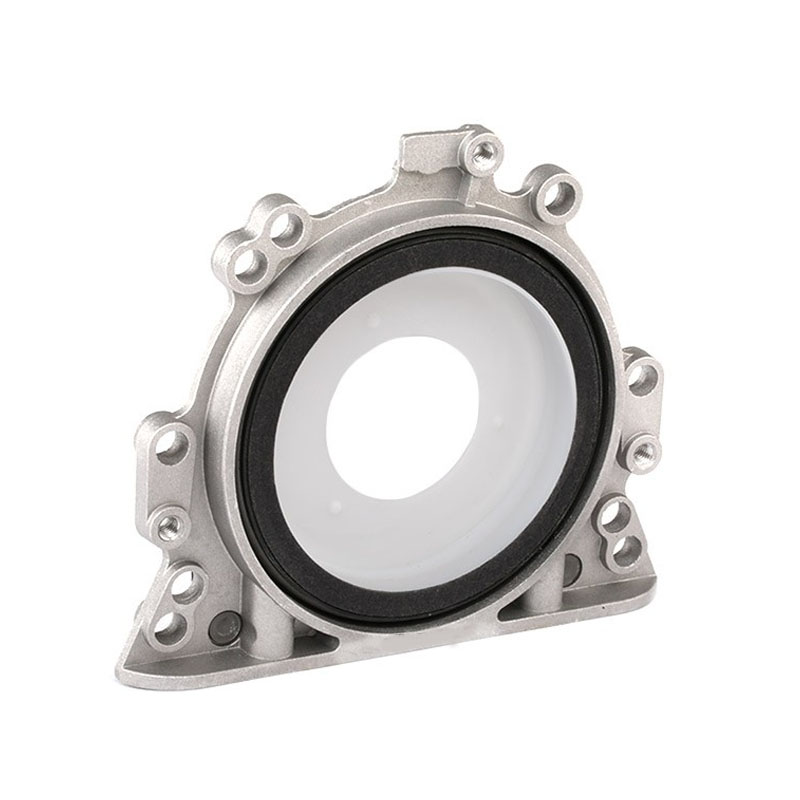front crank shaft
Understanding Front Crank Shaft A Key Component in Engine Dynamics
The front crank shaft, often simply referred to as the crankshaft, is a crucial element in an internal combustion engine. It plays a pivotal role in converting the linear motion of the pistons into rotational motion, which ultimately drives the vehicle's wheels. Understanding its construction, function, and importance can provide deeper insight into the workings of modern engines and their performance.
Construction of the Front Crank Shaft
The crankshaft is typically made from high-strength materials such as cast iron or forged steel, which can withstand the enormous forces generated during combustion. Its design often includes several key features
1. Crankpin This is the portion of the crankshaft where the connecting rods attach. Each crankpin corresponds to a piston in the engine. The placement and orientation of these pins can vary depending on whether the engine is a straight, V-type, or flat configuration.
2. Main Journals These are the bearing surfaces that allow the crankshaft to rotate smoothly within the engine block. The main journals are supported by bearings, which reduce friction and wear.
3. Counterweights To maintain balance and reduce vibration, counterweights are added to the crankshaft. These are particularly important in larger engines or those with multiple cylinders, as they help ensure a smooth operation.
4. Timing Sprockets or Gears In many engines, the crankshaft is connected to timing belts or chains which synchronize its rotation with the camshaft, ensuring proper valve timing.
Function of the Crank Shaft
The primary function of the front crank shaft is to convert the up-and-down motion of the pistons into rotational motion. As the fuel-air mixture ignites in the combustion chamber, it exerts pressure on the piston, pushing it down. This linear motion is captured by the crankpin, which is offset from the center of the crankshaft. As the piston moves down, the crankpin rotates, turning the crankshaft.
This rotational motion is transmitted to the transmission and ultimately to the drive wheels of the vehicle, propelling it forward. The efficiency and effectiveness of this conversion process are critical for the engine's overall performance and fuel efficiency.
front crank shaft

Importance in Engine Dynamics
The front crank shaft's design significantly impacts engine performance. Factors such as crankshaft weight, length, and the arrangement of the crankpins can influence
1. Torque Delivery A well-designed crankshaft can optimize power delivery, resulting in higher torque outputs across a range of RPMs. This is particularly important in performance-oriented engines where quick acceleration is desired.
2. Vibration Levels An unbalanced crankshaft can lead to increased vibrations, which can affect driver comfort and could potentially lead to mechanical failures over time. Balancing counterweights is essential in high-performance engines where the risk of vibration is magnified.
3. Durability and Reliability The crankshaft must withstand not only the forces generated during combustion but also the stresses from acceleration and deceleration. A failure in the crankshaft can lead to catastrophic engine damage, which is why materials and manufacturing processes have evolved to enhance durability.
Maintenance and Common Issues
Proper maintenance of the engine, including the crankshaft, is vital for longevity. Some common issues that can affect the crankshaft include
- Wear and Tear Over time, bearing surfaces can wear down, causing increased friction and leading to potential failures. - Crankshaft Misalignment This can occur due to improper installation or damage, leading to uneven wear and vibration. - Oil Contamination Poor lubrication can lead to overheating and damage, underscoring the importance of regular oil changes.
Conclusion
The front crank shaft is far more than just a mechanical component; it is an essential piece of the intricate puzzle that makes internal combustion engines function effectively. By converting linear motion into rotational energy, the crankshaft plays a crucial role in the overall engine dynamics, directly impacting performance, efficiency, and reliability. Understanding its construction, function, and importance not only illuminates the complexities of automotive engineering but also enhances the appreciation for the technology that powers our vehicles. As automotive innovations continue to advance, the design and function of the crankshaft will undoubtedly evolve, ensuring that it remains at the heart of engine performance for years to come.
-
The Ultimate Guide to Boat Propeller Bearings and Trailer Wheel Bearings
News Jul.31,2025
-
The Essential Guide to Marine Bearings and Boat Trailer Wheel Bearings
News Jul.31,2025
-
The Complete Guide to Heavy Duty Seals: Protecting Doors and Spaces Efficiently
News Jul.31,2025
-
Essential Guide to Marine Shaft Bearings and Boat Trailer Axle Bearings
News Jul.31,2025
-
Comprehensive Guide to Marine and Trailer Bearings for Safe Boating and Transport
News Jul.31,2025
-
Comprehensive Guide to Automotive Oil Seals: Protecting Your Engine and Shafts
News Jul.31,2025
-
Understanding Automotive Oil Seals: Essential Components for Engine and Shaft Protection
News Jul.30,2025
Products categories















